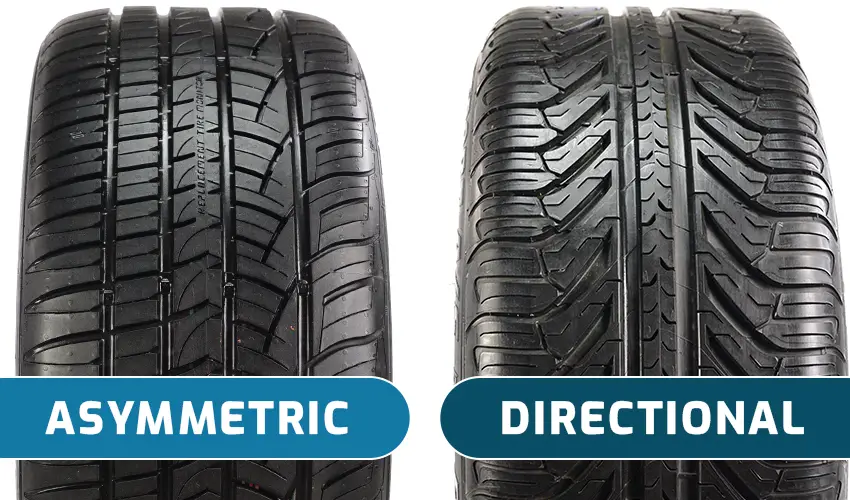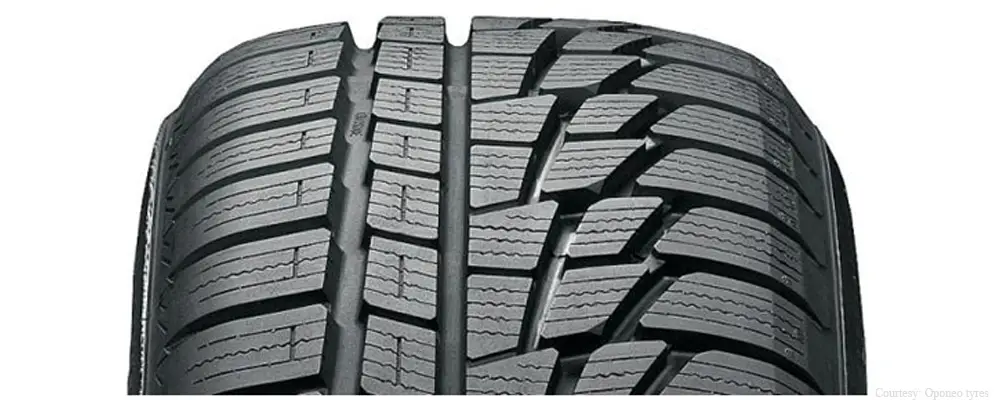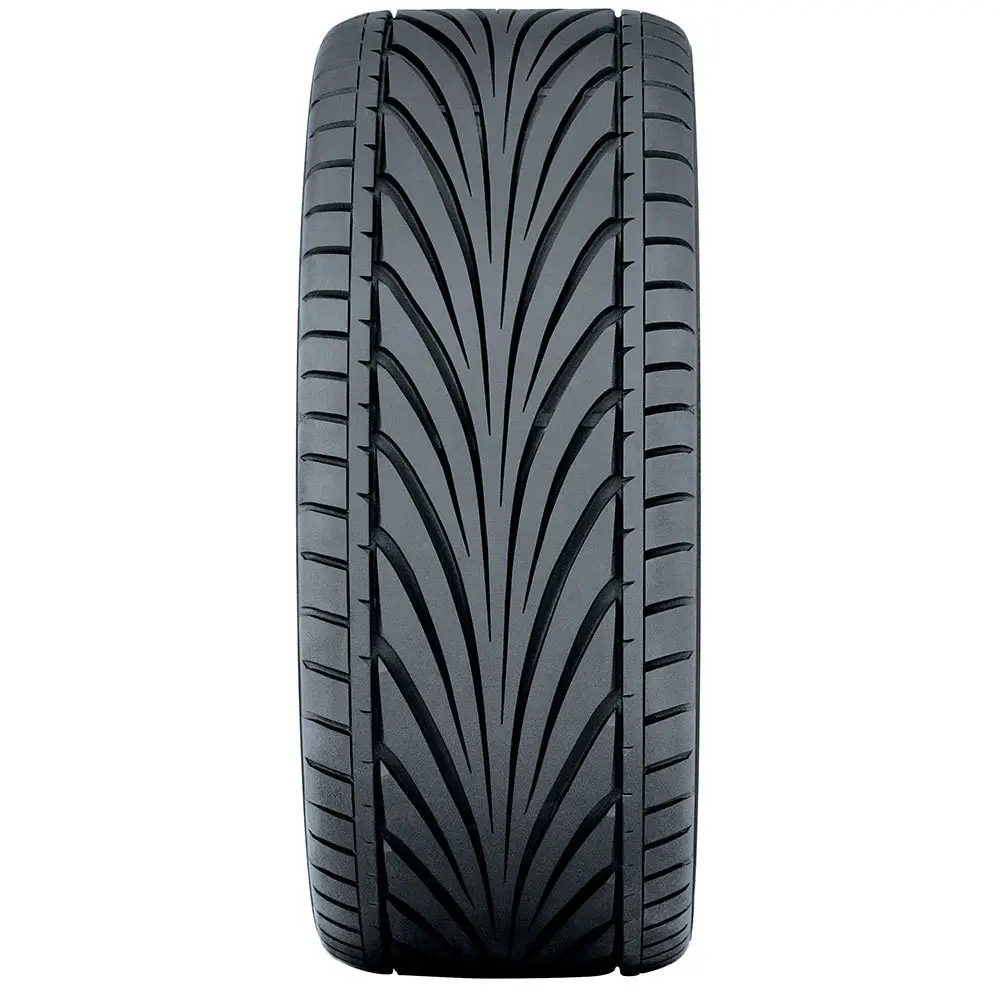
What Are The Differences Between Asymmetric And Directional Tires?
As every driver knows, choosing the right tire is crucial for unlocking the full potential of your vehicle. Beyond aesthetics, tires play a pivotal role in determining the handling, traction, and overall performance on various road conditions. Among the myriad tire options available, Asymmetric and Directional tires stand out as prime examples of engineering marvels, designed to elevate your driving experience to new heights.

In this article, we embark on a journey of discovery, exploring the defining characteristics, design elements, and driving capabilities of Asymmetric and Directional tires.
What are Asymmetric Tires?
At first glance, Asymmetric tires may seem like ordinary rubber donuts, but their true beauty lies within their carefully crafted design. Unlike conventional tires with uniform tread patterns, Asymmetric tires showcase a dual-personality, with distinct inner and outer zones specifically engineered for different road conditions.

Picture this: The outer zone of an Asymmetric tire is built for robust cornering and lateral stability, enabling precise control as you navigate curves and bends. In contrast, the inner zone prioritizes water evacuation, enhancing traction and handling on wet surfaces. This harmonious duality allows Asymmetric tires to excel in both dry and wet conditions, ensuring optimal performance across a wide range of driving scenarios.
Beyond their enigmatic design, Asymmetric tires bring forth an array of benefits that elevate the driving experience. Enhanced grip on dry roads grants drivers a sense of confidence as they embrace the open highway. Meanwhile, on rain-soaked pavements, the ability to disperse water effectively minimizes the risk of hydroplaning, maintaining stability and control.
Understanding Directional Tires: What Are They?
Directional tires, as the name suggests, have a distinct tread pattern that is crafted to channel water away from the tire’s footprint in a specific direction. The design features deep and wide V-shaped grooves that resemble the bold strokes of an artist’s brush, strategically aligned to ensure swift water evacuation, thereby minimizing the risk of hydroplaning.

At the heart of Directional tires lies an intricate science, where each groove plays a crucial role in enhancing performance. As water is rapidly expelled from beneath the tire, the risk of aquaplaning diminishes, leaving a firm contact patch that promotes precise handling and optimal traction on wet roads. This characteristic is especially advantageous during heavy rain or stormy weather, where maintaining control is paramount for safe driving.
RELATED: Can You Foam Fill Your Tires?
What Are The Differences Between Asymmetric And Directional Tires?
- Tread Pattern Design:
- Asymmetric Tires: Asymmetric tires have a tread pattern that is different on the inner and outer sides of the tire. The inner side is designed with larger and deeper grooves to disperse water efficiently, providing excellent traction in wet conditions. The outer side features smaller and shallower grooves, enhancing dry grip and stability during cornering and high-speed driving.
- Directional Tires: Directional tires have a tread pattern that features V-shaped grooves that point in one direction. These grooves are designed to evacuate water from under the tire quickly, reducing the risk of hydroplaning and providing exceptional wet-weather performance.
- Wet Weather Performance:
- Asymmetric Tires: Asymmetric tires excel in wet weather due to their water-channeling design on the inner side. This design helps prevent hydroplaning by expelling water from the tire’s contact patch, ensuring good traction on wet roads.
- Directional Tires: Directional tires are specifically optimized for wet performance. The directional grooves efficiently push water away from the tire’s center, improving stability and grip in rainy conditions.
- Dry Performance and Handling:
- Asymmetric Tires: The outer side of Asymmetric tires is designed for dry performance, offering enhanced grip and stability during cornering and high-speed driving on dry roads.
- Directional Tires: While Directional tires are primarily designed for wet performance, they still offer good dry-road handling and stability. The V-shaped grooves provide solid lateral grip and cornering capabilities.
- Tire Rotation:
- Asymmetric Tires: Asymmetric tires can be rotated diagonally and from front to back. However, they should not be flipped on the rim due to the specific design of the inner and outer sides.
- Directional Tires: Directional tires have a specific rotational direction indicated by an arrow on the sidewall. They can only be mounted to roll in one direction, and their rotation cannot be changed during tire rotation.
- Noise and Comfort:
- Asymmetric Tires: Asymmetric tires tend to offer a quieter and more comfortable ride due to their balanced design, which helps reduce road noise and vibrations.
- Directional Tires: Directional tires might produce slightly more road noise compared to Asymmetric tires, but advancements in tire technology have made modern Directional tires quieter and more comfortable than older designs.
Can Asymmetric Tires Be Directional?
No, Asymmetric tires cannot be directional. Asymmetric and Directional tires are two distinct tread pattern designs with different principles and functionalities.
Asymmetric tires have a tread pattern that is different on the inner and outer sides of the tire. The inner side is designed for water evacuation, providing excellent wet weather performance, while the outer side is optimized for dry grip and stability during cornering and high-speed driving. These tires are meant to be mounted in a specific orientation to ensure the correct performance of the inner and outer zones.
Directional tires, on the other hand, have a tread pattern with V-shaped grooves that point in one direction. These grooves are designed to efficiently channel water away from the tire’s contact patch, reducing the risk of hydroplaning and providing excellent wet traction. Directional tires have a specific rotational direction indicated by an arrow on the sidewall and can only be mounted to roll in one direction.
Because of their different tread designs and mounting requirements, Asymmetric tires cannot be rotated to function as Directional tires. Mixing the two types or trying to mount Asymmetric tires in a directional manner would compromise the intended performance and safety of the tires. Therefore, it’s essential to choose the appropriate tire type that aligns with your driving needs and vehicle specifications.
Should I Buy Directional or Asymmetric Tires?
The decision between buying Directional or Asymmetric tires depends on various factors, including your driving habits, typical weather conditions, and personal preferences. To make an informed choice, consider the following:
- Driving Conditions:
- Wet Weather: If you frequently drive in areas with heavy rainfall or encounter wet road conditions, Directional tires may be a better choice. Their V-shaped grooves are designed to disperse water efficiently, reducing the risk of hydroplaning and providing excellent wet traction.
- Mixed Conditions: Asymmetric tires are a good option if you encounter a mix of wet and dry conditions. Their dual-zone design offers good wet weather performance on the inner side and provides solid dry grip and stability on the outer side.
- Dry Performance:
- If you prioritize dry-road performance, Asymmetric tires might be more suitable. Their design focuses on optimizing grip and stability during cornering and high-speed driving on dry roads.
- Noise and Comfort:
- Asymmetric tires generally offer a quieter and more comfortable ride due to their balanced design, which helps reduce road noise and vibrations.
- Tire Rotation:
- Asymmetric tires can be rotated diagonally and from front to back, which can help promote even wear and extend tire life. On the other hand, Directional tires have a specific rotational direction and should not be flipped on the rim during rotation.
- Budget:
- Consider your budget and the cost of each tire type. Directional tires are often associated with high-performance characteristics and may be priced accordingly.
- Driving Style:
- Think about your driving style and how you use your vehicle. If you enjoy spirited driving or seek performance-oriented handling, the specific design elements of Asymmetric or Directional tires may cater better to your preferences.
- Vehicle Compatibility:
- Check your vehicle’s specifications and the recommended tire type from the manufacturer. Some vehicles may be more compatible with one type of tire over the other.
Ultimately, the choice between Directional and Asymmetric tires should align with your driving needs and the prevailing road conditions you encounter. If you’re uncertain, it’s a good idea to consult with a tire specialist or a knowledgeable professional at a tire dealership who can provide personalized advice based on your specific requirements and vehicle details.
Taking the time to research and compare different tire models will help you find the ideal set of tires to optimize your driving experience and safety on the road.
Conclusion
If you frequently drive in areas with heavy rainfall or encounter wet roads, Directional tires might be the ideal choice. Their V-shaped grooves efficiently disperse water, providing excellent wet traction and reducing the risk of hydroplaning.
On the other hand, if you encounter a mix of wet and dry conditions, Asymmetric tires offer a balanced solution. With their dual-zone design, they provide good wet performance on the inner side and deliver solid dry grip and stability on the outer side.
Consider your budget, driving style, and vehicle specifications when making your decision. Asymmetric tires generally offer a quieter and more comfortable ride, making them suitable for those seeking enhanced comfort during their daily commutes. On the other hand, Directional tires are often associated with high-performance characteristics and may be more appealing to spirited drivers seeking an edge on the road.